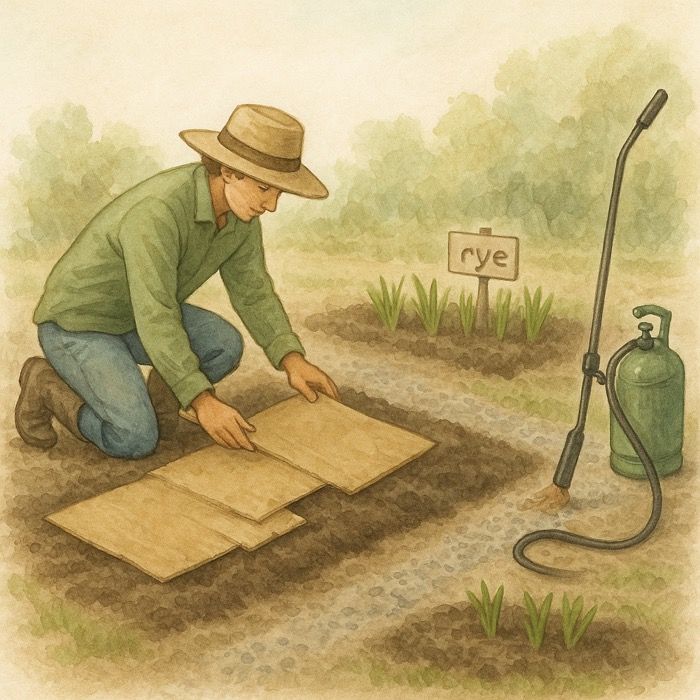The Ultimate Guide to Trellises: Enhancing Your Garden’s Beauty and Functionality
Vertical Garden Decor for Aesthetic Impact
Introduction
Welcome to our in-depth exploration of garden trellises, a vital and enchanting element for any gardening aficionado. Whether you’re an experienced gardener or a newcomer with a budding interest, a thorough understanding of trellises can dramatically enhance both the function and beauty of your garden. This detailed guide will cover everything from the historical significance of trellises to modern design principles, suitable materials, and the various types available. Additionally, we’ll explore the best plants for trellising, both floral and edible, to help you make the most of these versatile structures in your garden.
History of Trellises
Trellises have been a part of human cultivation practices since ancient times. In early civilizations, such as those in Rome and Egypt, trellises were used not only as plant supports but also as architectural elements that added aesthetic value to gardens and estates. These structures played a significant role in the cultivation of vine crops, particularly grapes, in these regions. Moving into the Middle Ages, trellises found their place in the monastic gardens, playing a crucial role in the cultivation of various herbs and medicinal plants. The Renaissance period elevated the trellis to an art form, with intricate designs gracing the estates of the wealthy and powerful, symbolizing both status and a deep appreciation for horticultural and architectural beauty.
Design Principles
When designing a trellis, one must balance practicality with visual appeal. The design should consider the specific needs of the plants it will support, including their weight and growth patterns. The trellis should be sturdy enough to support the plant at full maturity while also integrating seamlessly into the overall design of the garden. Incorporating elements of garden design, such as symmetry, color balance, and proportion, is crucial. The choice of design, whether it’s a traditional lattice or a more avant-garde sculpture-like structure, can either complement or become a focal point in your garden. Remember, the spacing and pattern of the trellis will influence not only the health and growth of your plants but also the shadow patterns and the interplay of light and texture in your garden.
Aesthetics and Vertical Elements in Trellis Design
The aesthetic appeal of a garden is significantly enhanced by incorporating vertical elements, and trellises are a masterful way to achieve this. In this section, we delve into the interplay of aesthetics and verticality in trellis design, offering insights and inspiration for gardeners looking to elevate their garden’s visual appeal.
The Role of Verticality Vertical elements in a garden add dimension and interest, drawing the eye upward and creating a sense of height and depth. Trellises, in particular, offer a unique opportunity to break the monotony of horizontal landscapes, allowing for a dynamic and layered garden design. They can be used to frame views, create garden rooms, or form living walls, thus offering both functional and aesthetic benefits.
Harmony with Garden Style The design of a trellis should harmonize with the overall style of the garden. In formal gardens, symmetrical and geometrically-patterned trellises can add elegance and order. For cottage or country-style gardens, a more whimsical or rustic trellis design can complement the informal planting style. In modern landscapes, minimalist and sleek trellises can enhance the contemporary look.
Integrating Art and Nature Trellises provide a canvas for merging art with nature. By selecting designs with artistic patterns or intricate details, a trellis becomes more than a plant support—it transforms into a piece of art that gracefully interweaves with the natural elements of the garden. Climbing plants add color, texture, and softness to the rigid structure, creating a living sculpture.
Color and Texture Considerations The color and texture of the trellis can significantly impact the garden’s visual appeal. Natural wood tones can blend with the surroundings, while colored trellises can become an accent feature in the garden. The texture of the material, whether smooth metal or rough wood, adds another layer of interest and can influence the overall feel of the space.
Enhancing Garden Themes A well-chosen trellis can reinforce or establish a garden theme. For example, a trellis with a nautical motif can enhance a seaside garden, while one with vineyard-inspired designs can evoke a Tuscan feel. This thematic approach to trellis design allows gardeners to express their creativity and personal taste.
Creating Depth and Perspective Strategically placed trellises can create illusions of depth and perspective in the garden. By using trellises of varying heights or placing them at different depths in the garden, you can create a more visually engaging space. This technique is particularly effective in smaller gardens where space is limited.
Seasonal Variation and Interest Trellises contribute to the garden’s seasonal dynamics. In spring and summer, they support lush greenery and blooms, while in autumn and winter, their bare structures offer stark, sculptural beauty. This seasonal change adds a temporal dimension to the garden, making it a living, evolving space.
Materials
Choosing the right material for your trellis is as important as the design itself. Traditional wood trellises, preferred for their natural appearance, blend seamlessly into classic and cottage-style gardens but require regular maintenance to prevent decay. Metal trellises, on the other hand, offer a blend of durability and elegance, with options ranging from wrought iron to contemporary stainless steel, perfect for modern garden designs. Plastic and vinyl trellises are gaining popularity for their low maintenance and variety in color, making them a versatile choice for many gardeners. Bamboo and willow trellises offer a sustainable and organic look, ideal for creating a serene, naturalistic garden setting.
Flowers and Vegetables
The use of trellises in a garden setting is incredibly diverse, accommodating both ornamental and functional purposes. For flower gardens, trellises provide support for climbing beauties like wisteria, jasmine, or honeysuckle, creating vertical interest and a fragrant, blooming canopy. They are equally beneficial in vegetable gardens; trellises can elevate peas, pole beans, and vining tomatoes, enhancing air circulation, reducing disease, and improving yield. Moreover, vertical gardening through trellises is a space-efficient way of growing cucumbers and squash, especially in urban settings with limited space.
| Flower | Zones | Colors | Garden Types |
|---|---|---|---|
| Clematis | 4–9 | Purple, White, Pink, Red | Cottage, Pollinator |
| Sweet Pea (Lathyrus odoratus) | 3–8 (cool season) | Pink, White, Purple, Bicolor | Cottage, Pollinator |
| Morning Glory (Ipomoea) | Annual in all zones | Blue, Purple, Red, White | Cottage, Hummingbird |
| Climbing Roses | 4–10 | Red, Pink, White, Yellow | Cottage, Mediterranean |
| Black-eyed Susan Vine (Thunbergia) | 9–11 (annual elsewhere) | Yellow, Orange, White | Pollinator, Cottage |
| Passionflower (Passiflora) | 6–10 (varies) | Purple, Blue, White | Mediterranean, Hummingbird, Pollinator |
| Trumpet Vine (Campsis radicans) | 4–9 | Orange, Red, Yellow | Hummingbird, Cottage |
| Honeysuckle (Lonicera) | 4–9 | Yellow, White, Pink, Red | Cottage, Hummingbird |
| Hyacinth Bean Vine (Lablab purpureus) | 9–11 (annual elsewhere) | Purple | Pollinator, Cottage |
| Bougainvillea | 9–11 | Magenta, Red, Orange, White | Mediterranean |
| Star Jasmine (Trachelospermum jasminoides) | 8–11 | White | Mediterranean |
| Mandevilla | 9–11 | Pink, Red, White | Hummingbird, Mediterranean |
| Golden Trumpet (Allamanda) | 10–11 | Bright Yellow | Tropical, Mediterranean |
| Moonflower (Ipomoea alba) | Annual in most zones | White | Cottage, Pollinator |
| Wisteria | 5–9 | Purple, Blue, White | Cottage, Mediterranean, Classic Formal |
Types of Trellises
- Flat Trellises: These are perfect for creating a green facade on walls or fences, ideal for climbers like ivy and climbing hydrangeas.
- Obelisk or Tower Trellises: With their narrow, vertical design, they serve as striking garden centerpieces while supporting plants like sweet peas and black-eyed Susan vines.
- Arched Trellises: These transform pathways into enchanting passages, ideal for roses and grapevines.
- Fan Trellises: Excellent for plants that require a broad base for growth, like clematis or trumpet vines.
- Pergolas: Large and sturdy, these structures are perfect for creating shaded sitting areas, draped with wisteria or grapevines.
- Lattice Trellises: With their crisscross pattern, they provide numerous support points, suitable for a variety of climbing plants.
- Pot Trellises: These small-scale trellises enhance container gardening, supporting plants like climbing nasturtiums or small ivies.
- Expanding Trellises: Versatile and adaptable, they can fit into various spaces and support a range of plants.
- Gazebo Trellises: Merging function and form, they offer a restful garden retreat covered in climbing blooms.
- Wall-mounted Trellises: Designed to protect your walls, they guide plants in an orderly fashion, suitable for espalier fruit trees or jasmine.
Conclusion
Incorporating a trellis into your garden is a decision that transcends mere plant support. It’s about adding an architectural dimension to your garden, creating vertical interest, and maximizing your planting space. The choice of a trellis, from a simple wooden lattice to an ornate metal structure, is as much a reflection of your personal style as it is a functional addition to your garden. With the right trellis, you can transform your garden into a dynamic, three-dimensional landscape where plants not only grow but thrive in harmony with their surroundings. Let your garden reach new heights with the perfect trellis – your plants, and your aesthetic sensibilities, will thank you. Happy gardening!
More From Our Master Gardener
Recent Posts

❄️ Snow as Fertilizer – The Truth About “Poor Man’s Nitrogen”

5 Unexpected Winter Weed Control Strategies (That Don’t Involve Mulch)

Harnessing Winter Sun – Passive Solar Tricks for Your Garden

How to Grow Spinach – The Ultimate Beginner’s Guide for Tender, Nutritious Leaves

How to Grow Peas: The Ultimate Beginner’s Guide for Sweet, Crisp Harvests
















